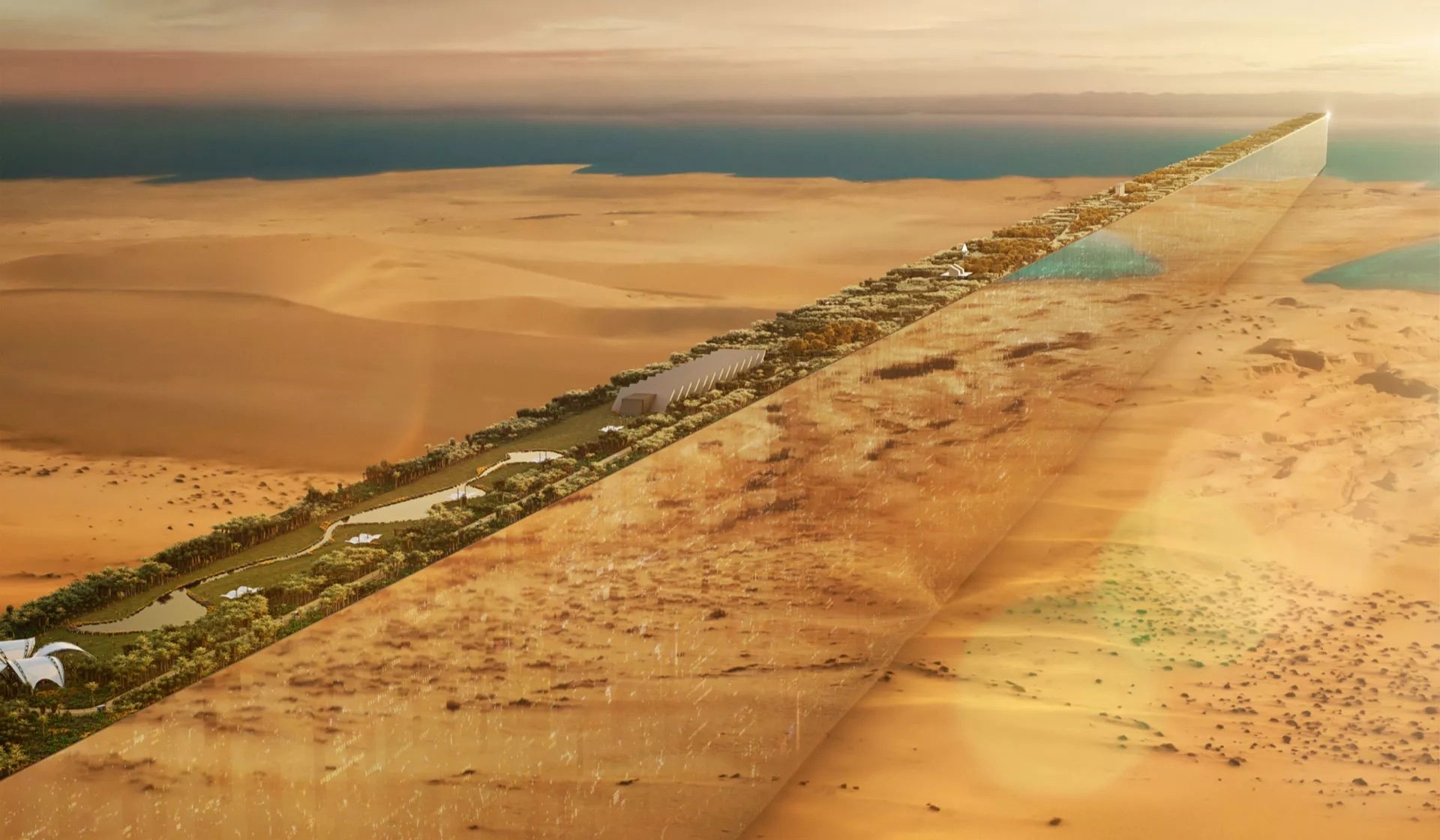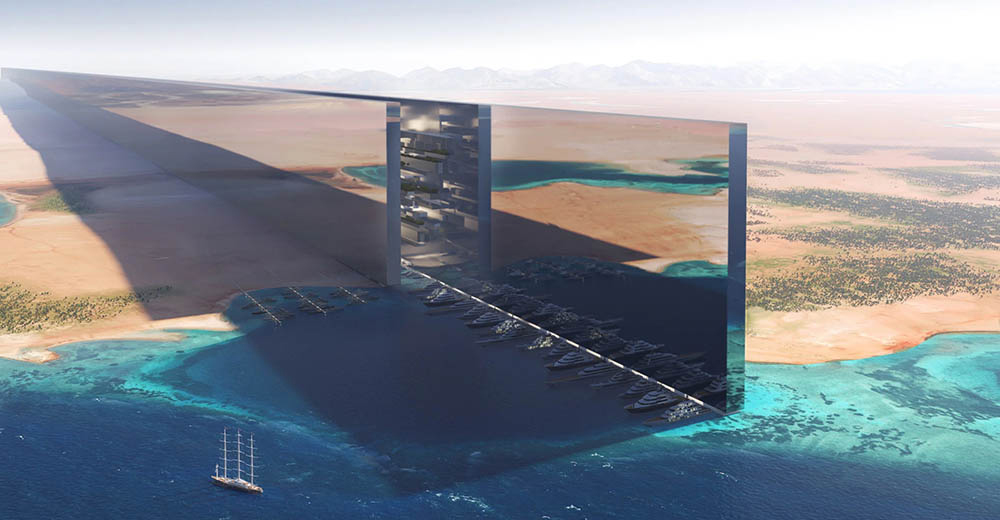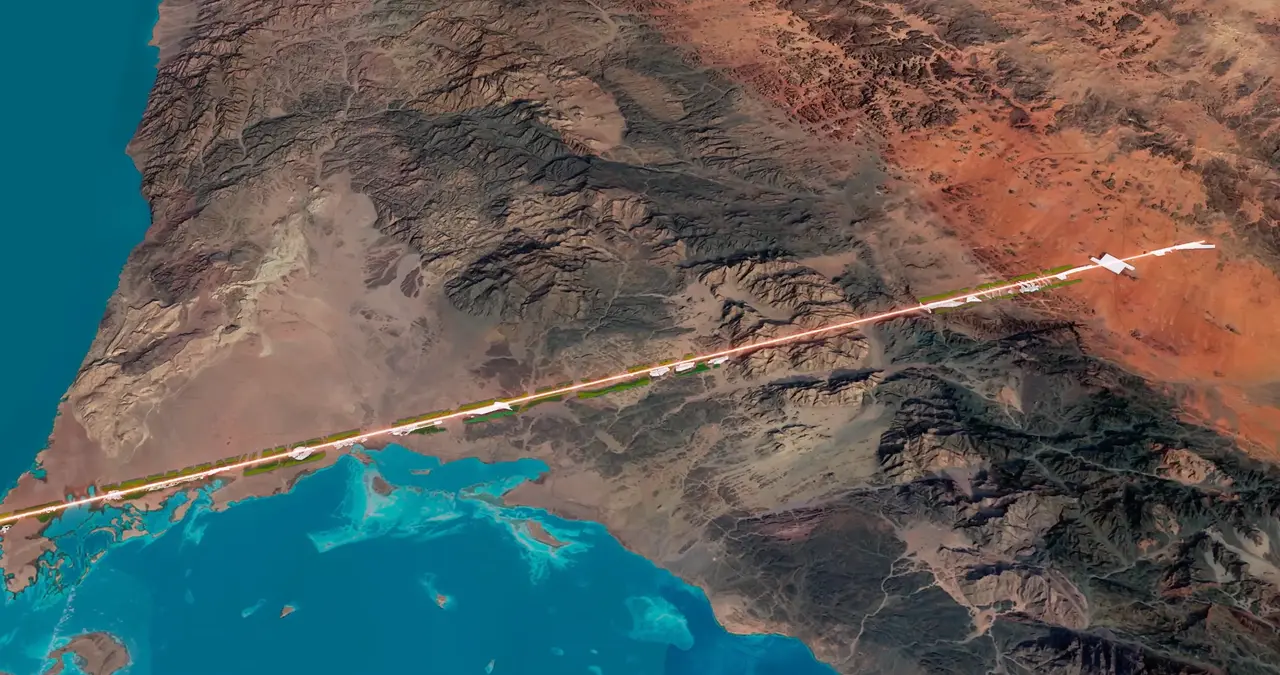The Line Saudi Arabia is a revolutionary linear city project redefining urban living with sustainability, AI, and futuristic design under Vision 2030. Explore its full vision, benefits, and global impact.
The Line Saudi Arabia is not just a city; it’s a revolutionary idea that challenges traditional urban planning and redefines the future of living. Nestled in the vast desert of Saudi Arabia, this linear city stretches across the region of NEOM and is poised to become a game-changer in the way we perceive cities. It’s a bold attempt by Saudi Arabia to diversify its economy, reduce dependence on oil, and move toward a more sustainable, tech-driven future.
The project has captured global attention for its audacious scale and futuristic ambition. Built around the principles of sustainability, zero carbon emissions, and artificial intelligence, The Line Saudi Arabia is more than a concept—it’s a living, breathing embodiment of Saudi Vision 2030. In this article, we’ll unpack everything from its design, purpose, potential benefits, and challenges to what makes it a landmark development in human history.
Understanding The Line Saudi Arabia
At its core, The Line Saudi Arabia is a 170-kilometer-long linear city that aims to house nine million people without cars, streets, or carbon emissions. Sounds like a scene from a sci-fi movie, right? Well, Saudi Arabia is making it a reality.
Unlike traditional cities that expand horizontally or radially, The Line will rise vertically and stretch horizontally. This means everything—from your home, workplace, school, parks, to essential services—will be just a five-minute walk away. The concept focuses on reducing commute times and minimizing human impact on the environment. It’s urban efficiency taken to a whole new level.
By concentrating urban life within a narrow footprint, The Line preserves nature while accommodating a high population density. The city is planned to be powered entirely by renewable energy, with AI integrated into almost every facet of life. Autonomous transportation, smart buildings, and cutting-edge healthcare are just the tip of the iceberg.
The Vision Behind The Line Saudi Arabia
The Line Saudi Arabia is a cornerstone of NEOM, a $500 billion megaproject announced by Crown Prince Mohammed bin Salman. NEOM represents a pivot from traditional oil-based economics to a more diversified, knowledge-based economy. It’s a central pillar of Saudi Arabia’s Vision 2030, an initiative aimed at reducing the kingdom’s reliance on fossil fuels and opening up new avenues for investment and innovation.
This vision isn’t just about technology or economics—it’s about creating a new way of life. The Line promises a city where quality of life is enhanced through environmental sustainability, integrated urban design, and the intelligent use of resources. It imagines a future where urban sprawl is eliminated, nature is protected, and people live in harmony with technology.
In many ways, The Line Saudi Arabia serves as a prototype for future cities around the world. It challenges outdated urban norms and offers a solution to issues like pollution, traffic congestion, and resource depletion. The ultimate goal is to provide a model for sustainable living that other nations can emulate.
Architectural Design and Urban Layout
What makes The Line truly fascinating is its architectural philosophy. The city will consist of two parallel mirror-faced buildings running through the desert, each 500 meters tall, 200 meters wide, and 170 kilometers long. These structures will house everything—residences, offices, schools, shopping centers, and green spaces.
This mirrored design isn’t just aesthetic; it’s functional. The reflective exterior helps regulate internal temperatures by deflecting sunlight, while the narrow footprint minimizes disruption to the natural landscape. The entire structure is designed to be modular, meaning it can be built in stages and easily adapted as technologies evolve.
Inside The Line, vertical layering will replace horizontal sprawl. The idea is to stack homes, offices, and public spaces vertically, with high-speed transportation systems running horizontally underground. This three-dimensional city structure maximizes space efficiency while ensuring ease of access to daily needs.
Environmental Sustainability and Green Living

Sustainability is not an afterthought in The Line Saudi Arabia—it’s the very foundation. The city is planned to run entirely on renewable energy, with zero carbon emissions. Solar, wind, and hydrogen power will be harnessed to fuel the city, making it one of the greenest urban developments in the world.
By eliminating cars and streets, The Line drastically reduces pollution and energy consumption. The design also incorporates extensive greenery, vertical gardens, and intelligent waste management systems. Rainwater harvesting and advanced recycling will be integral, aiming for zero waste and complete water self-sufficiency.
Moreover, by preserving 95% of the surrounding nature, The Line sets a new standard for ecological responsibility in urban planning. It shows how cities of the future can grow without encroaching upon the environment, making it a blueprint for sustainable growth.
The Role of Technology and AI in The Line
The Line Saudi Arabia is set to be one of the most technologically advanced cities ever built. Artificial intelligence will play a central role in managing everything—from traffic systems and healthcare to energy consumption and security.
Smart sensors and real-time data analytics will allow the city to adapt dynamically to the needs of its residents. AI will help optimize energy use, predict maintenance issues before they happen, and ensure the smooth operation of public services. In many ways, The Line will be a living, learning city—constantly evolving and improving.
Another intriguing aspect is the integration of autonomous transportation. With no cars or roads, the city will rely on high-speed transit systems that can move people from one end to another in under 20 minutes. This not only saves time but also contributes to the overall environmental goals.
Economic Impact and Job Creation
Beyond its technological marvels, The Line Saudi Arabia is a massive economic initiative. It is expected to create hundreds of thousands of jobs in construction, engineering, renewable energy, information technology, and tourism. The ripple effect on the Saudi economy could be profound.
The project is also expected to attract foreign investment, given its ambitious scope and alignment with global sustainability goals. It opens up avenues for collaboration in various sectors, from green tech and AI to healthcare and education.
Furthermore, The Line is a statement to the world: Saudi Arabia is ready to lead the future. By investing in human capital and technological innovation, the kingdom is positioning itself as a global hub for innovation and progress.
Cultural and Social Implications
The Line Saudi Arabia is not just about technology and economics—it’s also a cultural revolution. By bringing together people from different backgrounds in a highly integrated environment, The Line aims to foster a vibrant, inclusive community.
The city will feature spaces for art, music, theater, and cultural exchange. Education and healthcare systems will be world-class, with a strong emphasis on equality and accessibility. It represents a shift toward a more open, globally connected Saudi society.
Social well-being is a key component of the design. The walkable environment, abundant green spaces, and community-focused amenities aim to promote mental and physical health. It’s a holistic approach to urban living that prioritizes the human experience.
Challenges and Criticisms
Of course, a project of this magnitude is not without its challenges. The cost of building The Line Saudi Arabia is astronomical, and questions remain about its feasibility and long-term sustainability. Critics argue that the project may be overly ambitious and technologically untested on such a scale.
There are also concerns about displacement of local communities and environmental disruption during construction. While the project aims to preserve nature in the long term, the short-term impacts are yet to be fully understood.
Another issue is public acceptance. While the futuristic concept is exciting, it requires a significant cultural shift. People will need to adapt to a new way of living, which may not be easy for everyone. Ensuring inclusivity and maintaining the social fabric will be crucial to its success.
The Line Saudi Arabia in the Global Context
The Line is not happening in isolation. Cities around the world are grappling with similar issues—climate change, overpopulation, pollution, and deteriorating infrastructure. What makes The Line unique is its proactive approach. Instead of modifying existing urban areas, it’s starting from scratch.
This clean-slate approach allows for unparalleled innovation. Other countries are closely watching the development of The Line Saudi Arabia, as it could serve as a prototype for future urban development. If successful, it could mark the beginning of a new era in city planning.
International collaborations are already in motion, with global firms and experts contributing to various aspects of the project. The Line is not just a national endeavor—it’s a global conversation about the future of human habitation.
A Living Laboratory for Future Generations

The Line Saudi Arabia is more than a city—it’s a living lab. It will continuously test new technologies, urban models, and governance systems. From robotic construction methods to AI-based healthcare delivery, it will be a hub of constant experimentation.
Educational institutions and research centers are also part of the plan, turning The Line into a knowledge-driven ecosystem. It will attract thinkers, innovators, and creators from around the world, making it a breeding ground for future breakthroughs.
In essence, The Line is where the boundaries between science fiction and reality blur. It’s where new ideas will be born, tested, and scaled to change the world.
FAQs about The Line Saudi Arabia
What is The Line Saudi Arabia?
The Line is a 170 km long, futuristic city in Saudi Arabia that’s part of the NEOM project. It’s designed without cars or streets, focusing on sustainability, AI, and zero carbon emissions.
Who is behind The Line project?
The project is led by Saudi Crown Prince Mohammed bin Salman and is a major component of the NEOM megaproject under Vision 2030.
How will people travel in The Line?
The Line will feature high-speed autonomous transit systems that can take residents from one end to the other in under 20 minutes.
Will The Line really be sustainable?
Yes, it aims to run entirely on renewable energy and maintain a zero-carbon footprint while preserving 95% of the natural surroundings.
When will The Line be completed?
While parts of it are already under development, the full completion is expected to take several years, with milestones planned throughout the decade.
Can foreigners live or invest in The Line?
Yes, The Line is expected to attract global talent and investment, and it’s open to residents from around the world.
What are the main benefits of The Line Saudi Arabia?
Reduced commute times, cleaner environment, sustainable living, job creation, and cutting-edge infrastructure are some of the major benefits.
How will The Line affect Saudi society?
It will promote a more inclusive, diverse, and globally connected society while enhancing quality of life through smart urban planning.
Is The Line just a concept or is it being built?
It’s very real. Construction has already started and is progressing in phases.
Conclusion: A Bold Step Into the Future
The Line Saudi Arabia is a bold, futuristic leap toward reimagining how we live, work, and interact with our environment. It’s a fusion of innovation, sustainability, and visionary leadership that has the potential to redefine the very fabric of urban life. While challenges remain, the sheer scale and ambition of the project make it one of the most exciting developments of the 21st century. Whether you see it as a utopian dream or a practical solution to urban woes, The Line is undeniably a glimpse into the cities of tomorrow.




